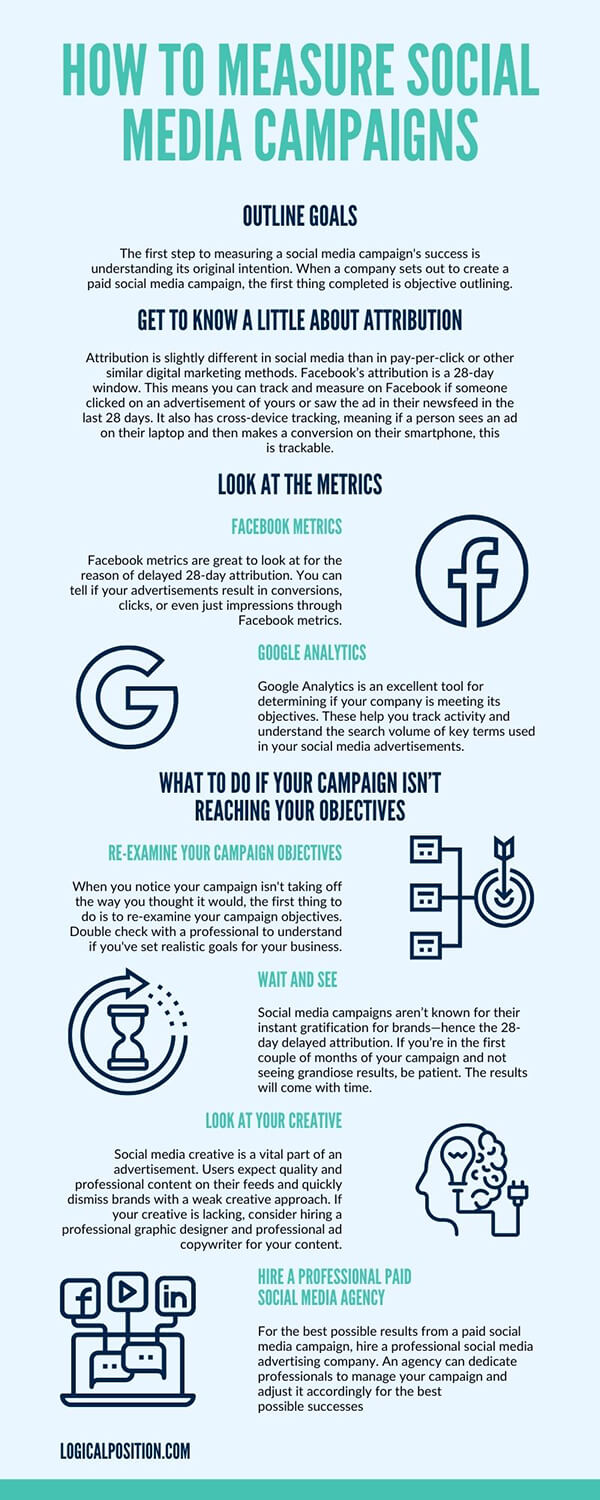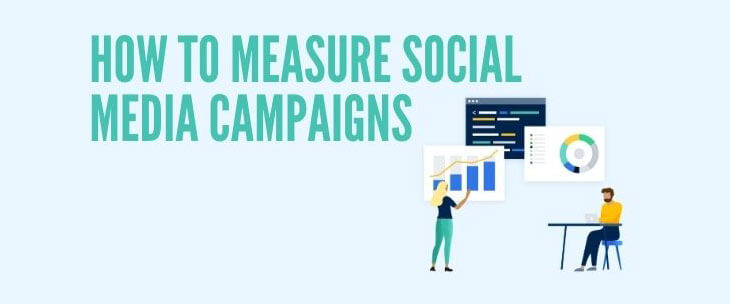Paid social media campaigns are integral to increasing conversions for many businesses. Virtually everybody is on some form of social media, making the market unlike any other. Social media provides businesses with a unique platform to increase their brand awareness and even target an audience with high conversion potential. One of the more challenging aspects of running a paid social media advertising campaign is determining what success looks like. Explore how to measure social media campaigns in a way that makes sense for your business.
Outline Goals
The first step to measuring a social media campaign’s success is understanding its original intention. When a company sets out to create a paid social media campaign, the first thing completed is objective outlining. In other words, determine what you want to get out of your campaign. Below are a few popular business goals:
- Increase brand awareness
- Increase website traffic
- Increase conversions
Often, businesses struggle to identify their primary goal in a campaign. With the help of a social media advertising expert, you can easily outline an objective and design a campaign driven by reaching it. The key to goal setting for a social media campaign is setting an attainable and clear objective.
Get To Know a Little About Attribution
Paid social media advertising is a unique faucet. Attribution is slightly different in social media than in pay-per-click or other similar digital marketing methods. Facebook’s attribution is a 28-day window. This means you can track and measure on Facebook if someone clicked on an advertisement of yours or saw the ad in their newsfeed in the last 28 days. It also has cross-device tracking, meaning if a person sees an ad on their laptop and then makes a conversion on their smartphone, this is trackable.
Delayed attribution is the term for this process. The sale made will look at the first impression for reporting rather than the last click. Last click tells a shorter story. Attribution tells the entire story. The social media user comes across your brand or product’s advertisement without search intent. It pops up, unwanted, in their newsfeed. This advertisement creates an impression, but the user may need to think about purchasing or doing research before deciding to buy the product. Consider this situation:
A woman is scrolling through her Instagram newsfeed on her phone, looking at pictures of friends and family. All of a sudden, an advertisement for half-price candles pops up in her feed. She recognizes that it’s a good deal and that she’s interested. She is also cautious of brands she’s never heard of; many scam sites are popping up lately.
She exits Instagram on her phone and picks up her laptop. She opens Google and searches the brand’s name and “half- price candles.” The website pops up, along with a Google My Business listing. On the Google My Business listing, she reads reviews of the company and becomes more familiar with the brand.
She then goes to the brand’s website. After exploring the scents, she puts three candles in her cart. She closes the laptop to think about it.
A few days later, she’s completely forgotten about the candles and the brand when suddenly the topic of candles comes up in a conversation with a friend. She remembers about the candles and goes to her smartphone.
She uses a Google paid search advertisement to find the website again and completes her purchase of the three candles.
With last-click attribution, this sale is considered a conversion by paid search—but the process truly began with the woman’s brand exposure via the first social media advertisement. Facebook can tell you the whole story with its 28-day attribution window and cross-device tracking abilities. Understanding how attribution works helps you better analyze your social media campaign metrics and determine which ads work well for your company.
Look at the Metrics
The best way to prove success in a social media campaign is through metrics. Which metrics you look at is highly determined by your goals as a company through this social media campaign.
Facebook Metrics
Facebook metrics are great to look at for the reason of delayed 28-day attribution. You can tell if your advertisements result in conversions, clicks, or even just impressions through Facebook metrics.
Google Analytics
Google Analytics is an excellent tool for determining if your company is meeting its objectives. These help you track activity and understand the search volume of key terms used in your social media advertisements.
Also, ensure you’re paying close attention to certain KPIs specific to social and some that are a cross-product for a full view of the successes and pitfalls of your campaign.
What To Do if Your Campaign Isn’t Reaching Your Objectives
If you’ve outlined your goals, understand delayed attribution, are checking the right metrics, and you still aren’t seeing the desired results, you may need to adjust your campaign. Don’t be discouraged if your campaign isn’t yielding the results you want. Social media advertising takes time, but it does pay off with a little adjusting and learning. In the meantime, here are a few strategies for helping a struggling campaign.
Re-Examine Your Campaign Objectives
When you notice your campaign isn’t taking off the way you thought it would, the first thing to do is to re-examine your campaign objectives. Double check with a professional to understand if you’ve set realistic goals for your business.
Wait and See
Social media campaigns aren’t known for their instant gratification for brands—hence the 28-day delayed attribution. If you’re in the first couple of months of your campaign and not seeing grandiose results, be patient. The results will come with time.
Give your metrics a chance to catch up to your sales before you throw in the towel or restructure your entire campaign. Suppose your campaign is more than three months in, and you’re still not seeing measurable results. In that case, you should look deeper into your campaign and investigate what’s going wrong.
Look at Your Creative
If your creative is weak or doesn’t resonate with your target audience, your campaign most likely won’t succeed. Social media creative is a vital part of an advertisement. Users expect quality and professional content on their feeds and quickly dismiss brands with a weak creative approach. If your creative is lacking, consider hiring a professional graphic designer and professional ad copywriter for your content. The higher the quality of your creative, the better your results.
Pro Tip: When users see creative that lacks quality, they often become suspicious of the brand. There are many online scams and fraudulent stores out there, so people are more skeptical of low-quality content than ever before.
Hire a Professional Paid Social Media Agency
For the best possible results from a paid social media campaign, hire a professional social media advertising company. An agency can dedicate professionals to manage your campaign and adjust it accordingly for the best possible successes. They can help you define goals, create a plan, and follow through—some even provide high-quality creative and ad-copy content.

Logical Position is a professional digital marketing agency with specialists in paid social media advertising who pride themselves on providing clients with a team of experts. Our clients enjoy a dedicated account manager as the main point of contact who oversees the campaign’s entirety, as well as a copywriter, editor, graphic designer, and so much more. Logical Position is a Facebook Premier Partner, meaning Facebook recognizes our expertise in their social platforms.
With our regular check-in calls, complete transparency, and dedication to helping your business achieve its goals, we’re more than just an agency—we’re a partner. Contact us today for a free consultation and to learn more about our services.




